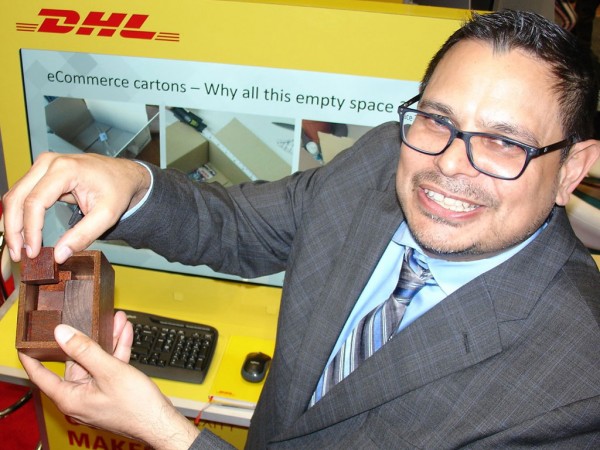When it comes to shipping cartons, size clearly matters, according to DHL Supply Chain design team executives exhibiting this week at the Retail Industry Leaders Association’s LINK 2019 supply chain conference in Kissimmee, Florida.
“Shipping is probably the largest cost in an e-fulfillment, and there are simple things we can do with carton sizes to greatly reduce those costs,” Adrian Kumar, DHL Supply Chain’s vice president of solutions design, told AJOT.

In fact, DHL Supply Chain’s algorithmic right-sizing approach to selection of shipping boxes is such a science that the company filed for a patent last August for what it described as its “shipping carton optimization system and method.”
In an era of dimensional weight charges, the practice of shipping less air is bringing about year-over-year savings of between 5 percent and 20 percent, depending upon the customer, according to DHL Supply Chain’s presentation.
For example, Kumar said, DHL Supply Chain recently produced savings of 11 percent for a medical device company by replacing a previous set of eight preconfigured cartons with a different set of eight boxes better matched with the dimensional profile of that firm’s actual shipments.
Kumar, who is based at DHL Supply Chain’s North American headquarters in Westerville, Ohio, outlined a four-step process entailing cubing each order based on the dimensions of individual items; creating feasible candidate carton sizes in accordance with order profile; determining optimal cartons and conducting a sensitivity analysis; and, finally, updating the current carton set available at a given location.
The methodical approach includes assessing, for example, whether it makes a difference if an 11th size of carton is added at a warehouse operation where 10 different sizes of boxes are already in use, or, if there is very little call for one of the box sizes, removing it from the available choices.
“Obviously, the lesser is better, because, when you add more carton sizes, you add complexity at the pack station,” Kumar said.
He went on to say that, while some companies may tout made-to-order packaging, that tact is apt to bog down a rapid e-fulfillment operation and actually slow the shipping process.
Additionalcoverage of RILA LINK 2019 is to appear throughout the week at AJOT.com and in the March 11 print edition of AJOT.

